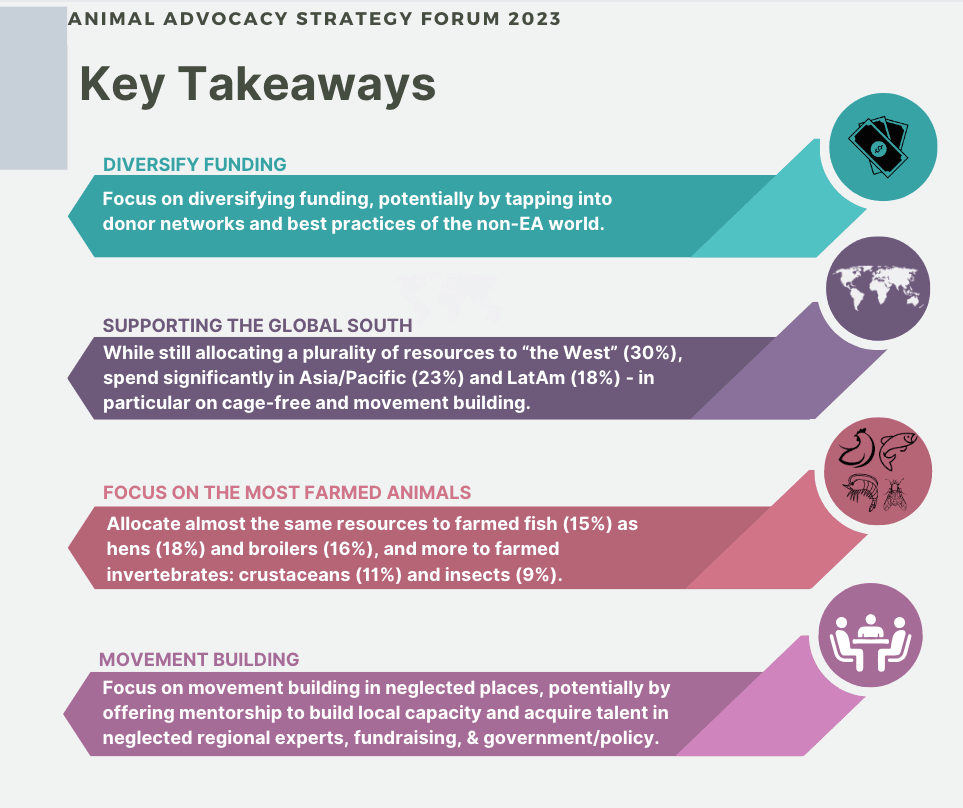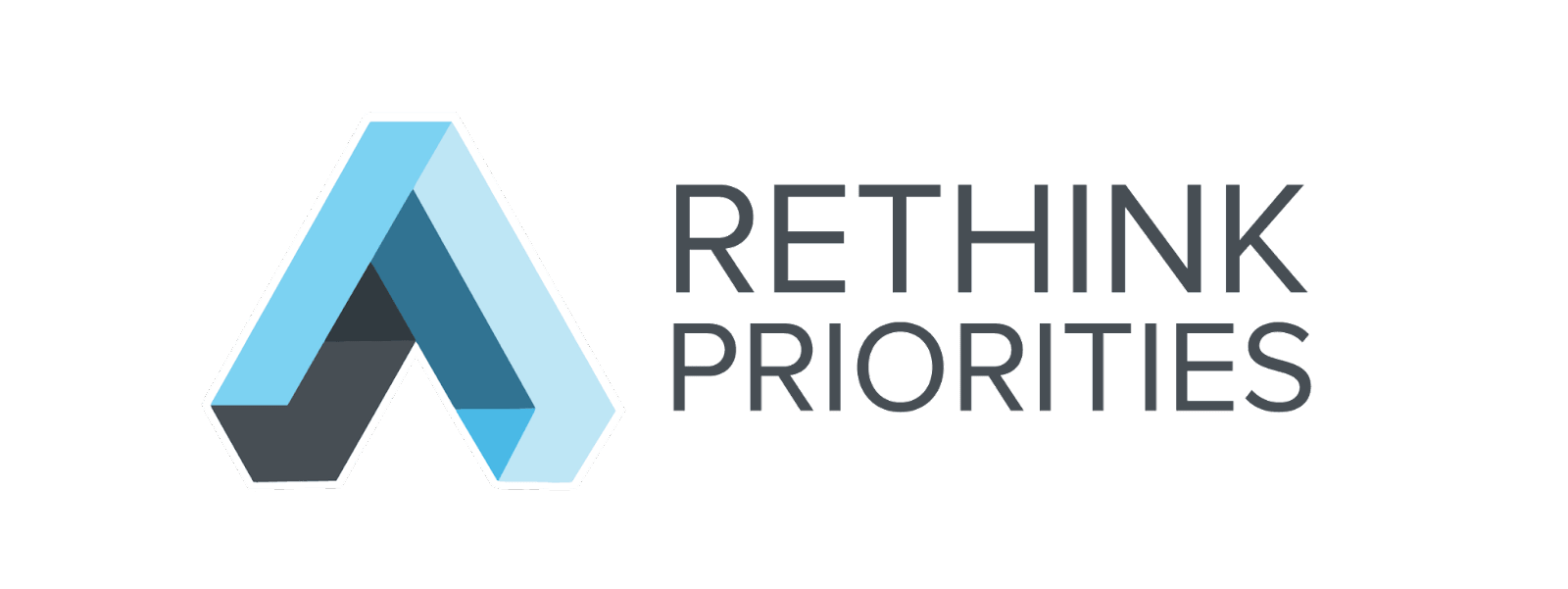Introduction
In July 2023, the Animal Advocacy Strategy Forum[1] was held over three days with the purpose of bringing together key decision-makers in the animal advocacy community to connect, coordinate, and strategize. At the end of the forum, 35/44 participants filled out a survey similar to last year’s Forum survey (Duffy 2023) that sought to better understand the future needs of effective animal advocacy groups and the perceptions of animal advocates about the most important areas to focus on in the future.
The attendees represented approximately 27 key groups in the animal advocacy space. 23/35 survey participants were in senior leadership positions at their organization (C-level, founder, and various “Executive” and “Director” roles).
Our report discusses the results of that survey and workshops of the forum itself.
Click here for the report on the Rethink Priorities website.

Acknowledgments
This report was written by Neil Dullaghan. Thanks to Daniela R. Waldhorn for their guidance, and Kieran Greig and Laura Duffy for their helpful feedback and to Adam Papineau for copy-editing. The post is a project of Rethink Priorities, a global priority think-and-do tank, aiming to do good at scale. We research and implement pressing opportunities to make the world better. We act upon these opportunities by developing and implementing strategies, projects, and solutions to key issues. We do this work in close partnership with foundations and impact-focused non-profits or other entities. If you're interested in Rethink Priorities' work, please consider subscribing to our newsletter. You can explore our completed public work here.
- ^
Formerly known as the Effective Animal Advocacy Coordination Forum





Thanks for putting on this event and sharing the takeaways!